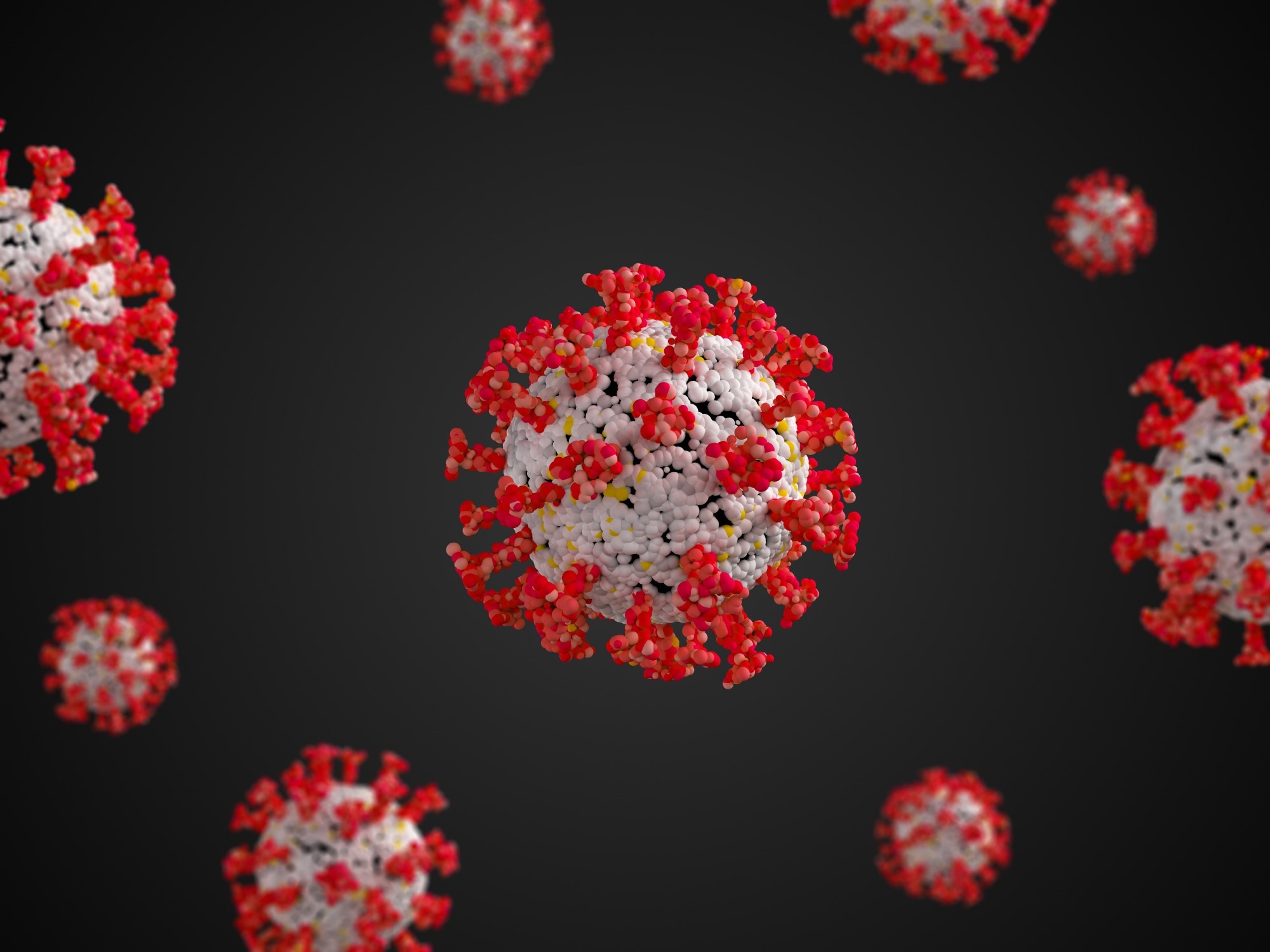Exploring SARS-CoV-2-associated endothelial dysfunction
A recent study published in Acta Pharmacologica Sinica described the evidence, mechanisms, and therapies for endothelial dysfunction in coronavirus disease 2019 (COVID-19).

COVID-19 has been a substantial public health emergency worldwide. Both pulmonary and extra-pulmonary systems are targeted by the causal agent, severe acute respiratory syndrome coronavirus 2 (SARS-CoV-2). The vascular endothelium provides a dynamic interface between blood and tissues/organs and maintains tissue homeostasis.
Numerous viruses can infect the endothelium and cause endothelial dysfunction. Accumulating evidence suggests that endothelial dysfunction is a key mechanism in COVID-19 pathogenesis. In the present study, researchers reviewed the contribution and tools of endothelial dysfunction in COVID-19 and its complications and biomarkers.
Endothelial functions and dysfunctions
Endothelial functions include maintenance of barrier integrity and anti-inflammatory, -oxidant, and -thrombotic interface and regulation of homeostasis, vascular tone, and cellular metabolism of amino acids, glucose, et cetera. The endothelium produces multiple vasoactive molecules that tightly regulate the balance between vasoconstrictory and vasodilatory, pro- and anti-thrombolytic, fibrinolytic and anti-fibrinolytic, pro- and anti-oxidant, and pro- and anti-inflammatory responses.
Nitric oxide (NO), produced by endothelial NO synthase (eNOS), is critical for endothelial homeostasis. Endothelial dysfunction is characterized by reduced bioavailability of NO and elevated levels of angiotensin II (Ang II), endothelin-1, etc. Reduced NO bioavailability is partially due to decreased NO synthesis and extensive reactive oxygen species (ROS) synthesis. ROS inactivates eNOS leading to eNOS uncoupling.
Endothelial dysfunction in COVID-19
SARS-CoV-2 can cause systemic vascular damage through angiotensin-converting enzyme 2 (ACE2) binding. ACE2 is the receptor SARS-CoV-2 uses for entry into host cells, including endothelial cells. Analysis of autopsied tissues from COVID-19 patients showed high ACE2 expression in capillaries but low in venules and arterioles relative to SARS-CoV-2-naïve subjects.
The major coronary arteries lack detectable ACE2 expression, suggesting that SARS-CoV-2-induced endothelitis occurs in tiny capillaries. Pulmonary endothelial cells have minimal ACE2 expression under normal conditions, but heterogeneous ACE2 levels and endothelial damage have been documented in autopsied tissues of COVID-19 patients.
Several histopathological analyses have provided evidence of direct infection of endothelial cells with SARS-CoV-2. Electron microscopic (EM) examination of kidney tissues showed evidence of endothelitis and viral particles in endothelial cells.
Mechanisms and markers of endothelial dysfunction in COVID-19
Lab Diagnostics & Automation eBook

COVID-19 may result in a severe cytokine storm caused by the excess production of inflammatory mediators in a subset of patients with severe disease. A study found endothelial inflammation-associated markers in lung tissues of COVID-19 patients. Further, it has been demonstrated in severe COVID-19 cases that exosomes activate caspase-1 and NLR family pyrin domain containing 3 (NLRP3) inflammasome and release interleukin (IL)-1-beta in endothelial cells.
Moreover, SARS-CoV-2 infection of brain microvascular endothelial cells indicated increased apoptosis of endothelial cells. RNA sequencing (RNA-seq) data showed elevated expression of markers associated with endothelial activation. Therefore, SARS-CoV-2-associated inflammasome activation and hyperinflammation may lead to endothelial cell injury and death.
Notably, cytokine storms could cause vascular leakage, particularly endothelial permeability. These cytokines can likely disrupt the integrity of junctional proteins, leading to the extravasation of immune and inflammatory cells. One study noted significantly elevated angiogenesis in lung tissues of COVID-19 patients.
Additionally, plasma profiling has shown increased circulating levels of angiogenesis markers, including vascular endothelial growth factor A (VEGF-A), in COVID-19 patients. Increased VEGF-A levels promote infiltration of inflammatory cells and endothelial leakage.
Multiple studies have reported elevated secretion of different markers of endothelial activation or dysfunction in COVID-19 patients. These include D-dimers, von Willebrand factor (vWF), factor VIII, soluble intercellular adhesion molecule 1 (sICAM1), soluble thrombomodulin (sTM), angiopoietin-2, VEGF-A, IL-6, IL-8, lactate, and syndecan-1, among others.
Therapeutics for endothelial dysfunction
Statins exhibit lipid-lowering, anti-inflammatory, -oxidant, -thrombotic, and immunomodulatory effects. Thus, they could be used as adjunctive therapy for SARS-CoV-2-associated endothelial dysfunction. The pharmacological profile of metformin, the first-line treatment for type 2 diabetes mellitus, makes it a promising candidate for repurposing to control inflammation in COVID-19 patients with diabetes.
Several clinical trials suggested that dexamethasone, a glucocorticoid, benefits COVID-19 patients. Dexamethasone treatment in severe COVID-19 patients significantly decreased the levels of endothelial dysfunction-associated markers. Tocilizumab, a humanized monoclonal antibody, is protective against endothelial dysfunction as it reduces oxidative stress and inflammation burden.
Concluding remarks
Endothelial dysfunction-induced endothelitis upon SARS-CoV-2 infection occurs due to several pathophysiological mechanisms, directly by SARS-CoV-2 disease or indirectly through paracrine effects of virus-infected cells. Although current therapies for COVID-19 are focused on inhibiting viral replication and limiting inflammasome activation or inflammation, novel therapeutic strategies for endothelial dysfunction may be promising for cardiovascular sequelae in convalescents.
- Xu S wen, Ilyas I, Weng J ping. (2022). Endothelial dysfunction in COVID-19: an overview of evidence, biomarkers, mechanisms and potential therapies. Acta Pharmacologica Sinica. doi: 10.1038/s41401-022-00998-0 https://www.nature.com/articles/s41401-022-00998-0
Posted in: Medical Science News | Medical Research News | Disease/Infection News
Tags: ACE2, Angiogenesis, Angiotensin, Angiotensin-Converting Enzyme 2, Antibody, Anti-Inflammatory, Apoptosis, Blood, Brain, Capillaries, Cell, Coronavirus, Coronavirus Disease COVID-19, covid-19, Cytokine, Cytokines, Dexamethasone, Diabetes, Diabetes Mellitus, Electron, Endothelial cell, Endothelin, Enzyme, Exosomes, Glucocorticoid, Glucose, Growth Factor, Immunomodulatory, Inflammasome, Inflammation, Interleukin, Kidney, Metabolism, Metformin, Molecule, Monoclonal Antibody, Nitric Oxide, Oxidative Stress, Oxygen, Public Health, Receptor, Respiratory, RNA, RNA Sequencing, SARS, SARS-CoV-2, Severe Acute Respiratory, Severe Acute Respiratory Syndrome, Stress, Syndrome, Therapeutics, Type 2 Diabetes, Vascular, VEGF, Virus

Written by
Tarun Sai Lomte
Tarun is a writer based in Hyderabad, India. He has a Master’s degree in Biotechnology from the University of Hyderabad and is enthusiastic about scientific research. He enjoys reading research papers and literature reviews and is passionate about writing.
Source: Read Full Article
